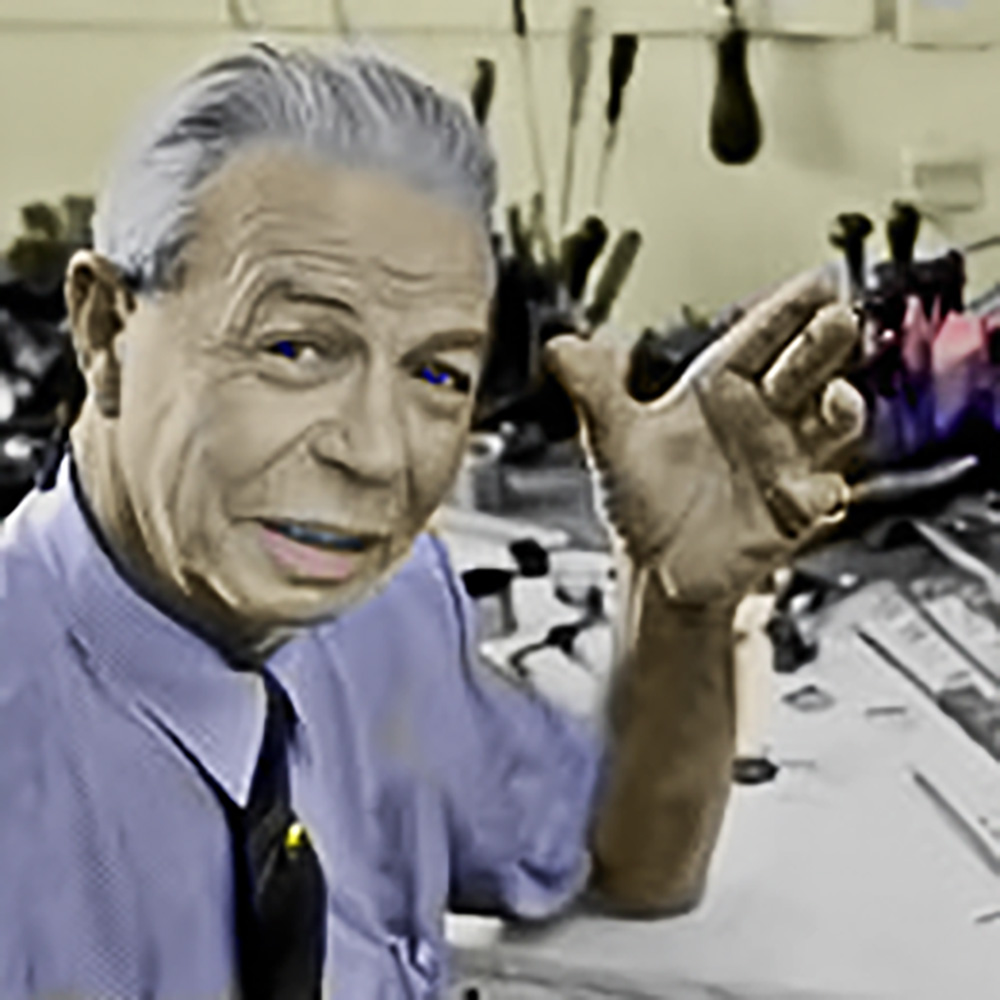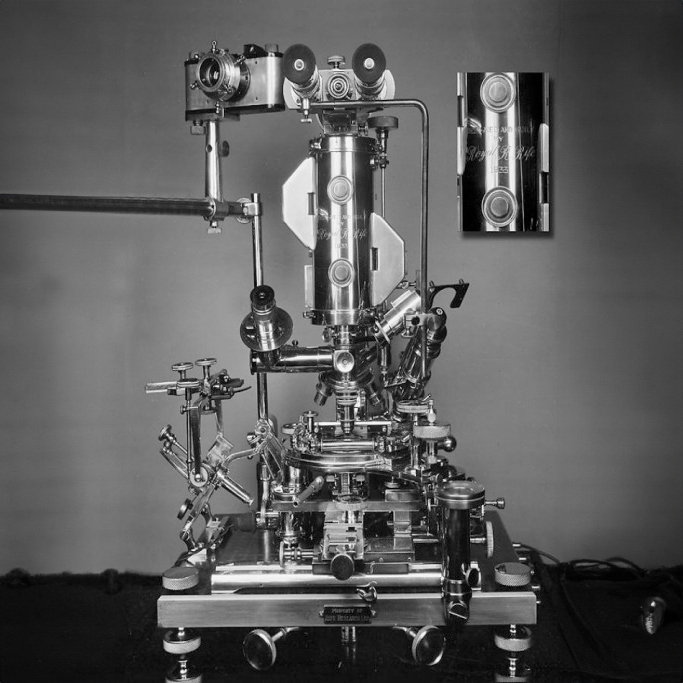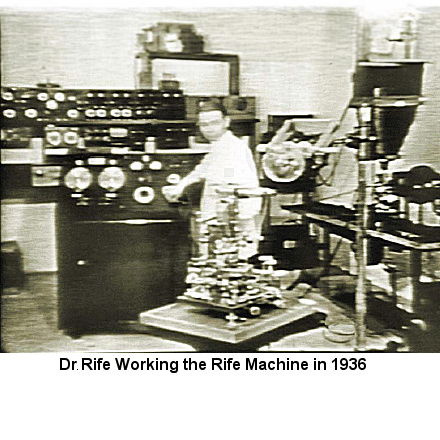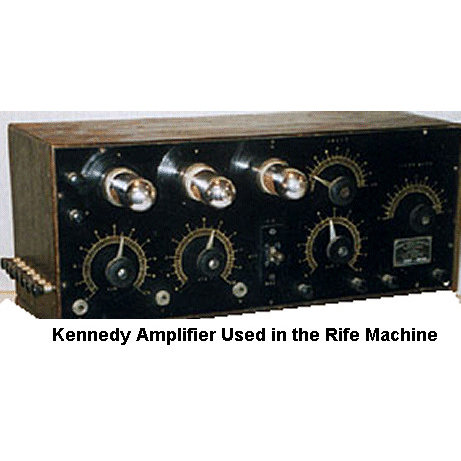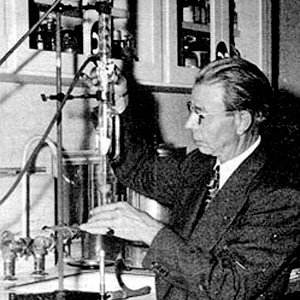
The Rife-Kendall Partnership
In 1931, the two men who provided the greatest professional support to Royal R. Rife came into his life. Dr. Arthur I. Kendall was Director of Medical Research at Northwestern University Medical School in Illinois. Dr. Milbank Johnson was a member of the board of directors at Pasadena Hospital in California and an influential power in Los Angeles medical circles.
Together, Rife, Kendall and Johnson slowly and carefully began an assault on the scientific and medical orthodoxies of their time. Probably because of the November 3, 1929 news article in the San Diego Union, Dr. Kendall had learned about Rife’s wonder microscope. He asked his friend Dr. Johnson of Los Angeles if such a microscope truly existed. Dr. Johnson and Dr. Alvin G. Foord, the pathologist at Pasadena Hospital (and later President of the American Association of Pathologists), journeyed to San Diego along with two other doctors. Foord’s presence from the beginning is important because later he lied about his participation in the great scientific endeavor which followed.
Rife, Johnson and Kendall, Advances in new technologies:
By the 1950s the AMA and the California State Board of Public Health were committed to squelching the Rife cancer treatment. By then many millions of people had died because the cancer treatment had been suppressed, doctors who had used the instrument successfully were being persecuted, and those with reputations to preserve were literally “lying through their teeth” as documents and personal testimony show.
But in 1931 when Johnson and Foord first met Rife, the future seemed to hold only endless medical advances because of Rife’s wonderful microscope. The four doctors were impressed. Johnson returned to Los Angeles and wired a report to Kendall in Chicago. Kendall sent a telegram back, “Expect to start for California Saturday night.” Dr. Kendall had invented a protein culture medium (called “K Medium” after its inventor) which enabled the “filtrable virus” portions of a bacteria to be isolated and to continue reproducing. This claim directly contradicted the Rockefeller Institute’s Dr. Thomas Rivers who in 1926 had authoritatively stated that a virus needed a living tissue for reproduction. Rife, Kendall and others were to prove within a year that it was possible to cultivate viruses artificially.
Rivers, in his ignorance and obstinacy, was responsible for suppressing one of the greatest advances ever made in medical knowledge. Of course, when Rivers opposed Kendall in 1932 and called him a liar at the meeting of the Association of American Physicians in Baltimore, Rivers had not had the opportunity to see the viruses on the “K Medium” under Rife’s microscope. But Rivers wasn’t interested in learning about the microscope, even after other top bacteriologists saw the same results. Rivers’ mistaken notion is still “law” in orthodox circles of the 1980s.
Kendall arrived in California in mid-November 1931 and Johnson introduced him to Rife. Kendall brought his “K Medium” to Rife and Rife brought his microscope to Kendall. A meeting of historic importance took place. A typhoid germ was put in the “K Medium,” triple-filtered through the finest filter available, and the results examined under Rife’s microscope. Tiny, distinct bodies stained in a turquoise-blue light were visible. Kendall could “see” the proof of what he had demonstrated by other means.
Two historic breakthroughs in science had happened. The virus cultures grew in the “K Medium” and were visible. The viruses could be “light” stained and then classified according to their own colors under Rife’s unique microscope. A later report which appeared in the Smithsonian”s annual publication gives a hint of the totally original microscopic technology which enabled man to see a deadly virus-size micro-organism in its live state for the first time (the electron microscope of later years kills its specimens): “Then they were examined under the Rife microscope where the filterable virus form of typhoid bacillus, emitting a blue spectrum color, caused the plane of polarization to be deviated 4.8 degrees plus. When the opposite angle of refraction was obtained by means of adjusting the polarizing prisms to minus 4.8 degrees and the cultures of viruses were illuminated by the monochromatic beams coordinated with the chemical constituents of the typhoid bacillus, small, oval, actively motile, bright turquoise-blue bodies were observed at 5000 x magnification, in high contrast to the colorless and motionless debris of the medium. These tests were repeated 18 times to verify the results.”
Following the success, Dr. Milbank Johnson quickly arranged a dinner in honor of the two men in order that the discovery could be announced and discussed. More than 30 of the most prominent medical doctors, pathologists, and bacteriologists in Los Angeles attended this historic event on November 20, 1931. Among those in attendance were Dr. Alvin G. Foord who 20 years later would indicate he knew little about Rife’s discoveries and Dr. George Dock who would serve on the University of Southern California’s Special Research Committee overseeing the clinical work until he, too, would “go over” to the opposition.
On November 22, 1931, the Los Angeles Times reported this important medical gathering and its scientific significance: “Scientific discoveries of the greatest magnitude, including a discussion of the world’s most powerful microscope recently perfected after 14 years effort by Dr. Royal R. Rife of San Diego, were described Friday evening to members of the medical profession, bacteriologists and pathologists at a dinner given by Dr. Milbank Johnson in honor of Dr. Rife and Dr. A. I. Kendall. “Before the gathering of distinguished men, Dr. Kendall told of his researches in cultivating the typhoid bacillus on his new ‘K Medium.’ The typhoid bacillus is nonfilterable and is large enough to be seen easily with microscopes in general use.
Through the use of ‘medium K’ Dr. Kendall said, the organism is so altered that it cannot be seen with ordinary microscopes and it becomes small enough to be ultra-microscopic or filterable. It then can be changed back to the microscopic or non-filterable form. “Through the use of Dr. Rife’s powerful microscope, said to have a visual power of magnification to 17,000 times, compared with 2000 times of which the ordinary microscope’s capable, Dr. Kendall said he could see the typhoid bacilli in the filterable or formerly invisible stage. It is probably the first time the minute filterable (virus) organisms ever have been seen. “The strongest microscope now in use can magnify between 2000 and 2500 times. Dr. Rife, by an ingenious arrangement of lenses applying an entirely new optical principle and by introducing double quartz prisms and powerful illuminating lights, has devised a microscope with a lowest magnification of 5,000 times and a maximum working magnification of 17,000 times. “The new microscope, scientists predict, also will prove a development of the first magnitude. Frankly dubious about the perfection of a microscope which appears to transcend the limits set by optic science, Dr. Johnson’s guests expressed themselves as delighted with the visual demonstration and heartily accorded both Dr. Rife and Dr. Kendall a foremost place in the world’s rank of scientists.”
Five days later, the Los Angeles Times published a photo of Rife and Kendall with the microscope. It was the first time a picture of the super microscope had appeared in public. The headline read, “The World’s Most Powerful Microscope. “Meanwhile, Rife and Kendall had prepared an article for the December 193 1 issue of California and Western Medicine. “Observations on Bacillus Typhosus in its Filtrable State” described what Rife and Kendall had done and seen. The journal was the official publication of the state medical associations of California, Nevada and Utah. The prestigious Science magazine then carried an article which alerted the scientific community of the entire nation. The December 11, 1931 Science News supplement included a section titled, “Filtrable Bodies Seen With The Rife Microscope.” The article described Kendall’s filtrable medium culture, the turquoise blue bodies which were the filtered form of the typhoid bacillus, and Rife’s microscope. It included the following description: “The light used with Dr. Rife’s microscope is polarized, that is, it is passing through crystals that stop all rays except those vibrating in one particular plane. By means of a double reflecting prism built into the instrument, it is possible to turn this plane of vibration in any desired direction, controlling the illumination of the minute objects in the field very exactly.” On December 27, 1931, the Los Angeles Times reported that Rife had demonstrated the microscope at a meeting of 250 scientists. The article explained, “This is a new kind of magnifier, and the laws governing microscopes may not apply to it. . . . Dr. Rife has developed an instrument that may revolutionize laboratory methods and enable bacteriologists, like Dr. Kendall, to identify the germs that produce about 50 diseases whose causes are unknown . . . then to find ways and means of immunizing mankind against them.”
Soon Kendall was invited to speak before the Association of American Physicians. The presentation occurred May 3 and 4, 1932 at Johns Hopkins University in Baltimore. And there Dr. Thomas Rivers and Hans Zinsser stopped the scientific process. Their opposition meant that the development of Rife’s discoveries would be slowed. Professional microbiologists would be cautious in even conceding the possibility that Rife and Kendall might have broken new ground. The depression was at its worst. The Rockefeller Institute was not only a source of funding but powerful in the corridors of professional recognition. A great crime resulted because of the uninformed, cruel and unscientific actions of Rivers and Zinsser. The momentum was slowed at the moment when Rife’s discoveries could have “broken out” and triggered a chain reaction of research, clinical treatment and the beginnings of an entirely new health system.
By the end of 1932, Rife could destroy the typhus bacteria, the polio virus, the herpes virus, the cancer virus and other viruses in a culture and in experimental animals. Human treatment was only a step away. The opposition of Rivers and Zinsser in 1932 had a devastating impact on the history of 20th century medicine. “Kendall’s observation marks a distinct advance in medicine.” It did little good. By then Rivers and Zinsser were the powers in the field. Kendall”s other supporter was Dr. Edward C. Rosenow of the Mayo Clinic’s Division of Experimental Bacteriology. (The Mayo Clinic was then and is today one of the outstanding research and treatment clinics in the world. The Washington Post of January 6, 1987 wrote, ‘To many in the medical community, the Mayo Clinic is ‘the standard’ against which other medical centers are judged.”) On July 5-7, 1932, just two months after Kendall’s public humiliation, the Mayo Clinic’s Rosenow met with Kendall and Rife at Kendall’s Laboratory at Northwestern University Medical School in Chicago. “The oval, motile, turquoise-blue virus were demonstrated and shown unmistakably,” Rosenow declared in the “Proceedings of the Staff Meetings of the Mayo Clinic, July 13, 1932, Rochester, Minnesota.” The virus for herpes was also seen.
On August 26, 1932, Science magazine published Rosenow’s report, “Observations with the Rife Microscope of Filter Passing Forms of Micro-organisms.” In the article, Rosenow stated: “There can be no question of the filtrable turquoise blue bodies described by Kendall. They are not visible by the ordinary methods of illumination and magnification. . . . Examination under the Rife microscope of specimens, containing objects visible with the ordinary microscope, leaves no doubt of the accurate visualization of objects or particulate matter by direct observation at the extremely high magnification (calculated to be 8,000 diameters) obtained with this instrument.”
Three days after departing from Rife in Chicago, Rosenow wrote to Rife from the Mayo Clinic: “After seeing what your wonderful microscope will do, and after pondering over the significance of what you revealed with its use during those three strenuous and memorable days spent in Dr. Kendall’s laboratory, I hope you will take the necessary time to describe how you obtain what physicists consider the impossible. . . As I visualize the matter, your ingenious method of illumination with the intense monochromatic beam of light is of even greater importance than the enormously high magnification. . . . ” Rosenow was right. The unique “color frequency” staining method was the great breakthrough.
Years later, after the era of television, an associate of the then deceased Rife would explain, “The viruses were stained with the frequency of light just like colors are tuned in on television sets.” It was the best non-technical description ever conceived. But in 1932, Rife was not interested in writing a scientific paper explaining the physics of his microscope, as Rosenow had hoped. Rife’s meeting with Kendall had provided Rife with the “K Medium.” And Rife knew what he wanted to do with it. He wanted to find the cancer virus. And that is exactly what he did in 1932.
